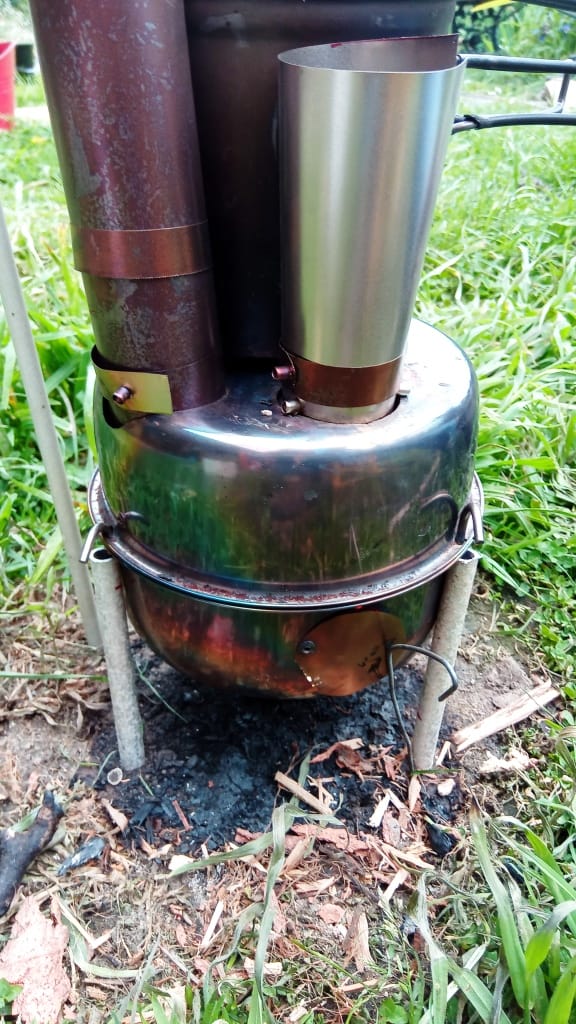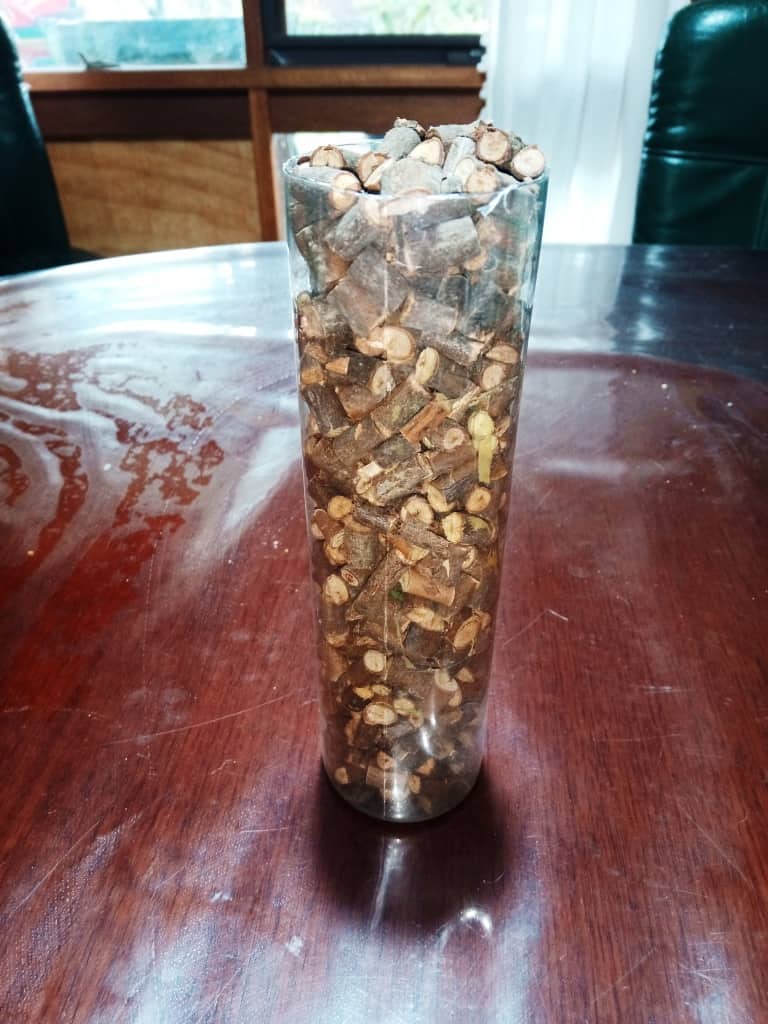This ‘Holy Grail’ of backpacking adventurers, fishers, hunters, skiers etc is inching closer and closer. Admittedly I have some work to do yet – and I also hope for assistance from other like-minded folks such as the indefatigable Tim Tinker for example. His wonderful website is here.

I am coming at this from several ‘angles’ which no doubt may need separate posts later to elucidate
1. ‘Newtonian’ Ultralight. It was not just Newton (I know) but many others (Liebniz, Descartes, Pascal & etc) who advanced our understanding of ‘rates of change’ (Calculus) as well as Thermodynamics. Tim has a lifetime of post-graduate work as a professional scientist so he will no doubt expound on this much better than I who only had High School Science 60 years ago, but please understand that the key to staying warm (or cold) is controlling the rate of change of heat/energy.
Partly this is about insulation where the ‘R-rating’ for example reflects a measure of this in watts per square metre per minute but it is also about heat output (ditto) and the efficiency of combustion, and how heat moves (radiation, conduction, convection). Elements of this include: how to insulate your tent/shelter to minimize the rate of heat loss by the three modes of heat transfer, designing stoves for optimal heat production per gram of fuel used, minimising the space to be heated compared with its weight/size & etc.
2. The ‘Insulated’ Tent. I am working on this. One of the ‘keys’ for me will be the acquisition of some .77oz/yd2 silnylon from Ripstopbytheroll (when I can afford it). This will allow me to make a double-skin tent or tipi etc which weighs little more than the same tent would out of ‘standard’ 1.3 oz/yd2 silnylon (but apparently is just as strong, if not stronger) – given that it is only the roof that will be double-skin.
I will first experiment by making a second ‘roof’ for my ‘Grey Flyer’ tent out of some .93oz/yd2 silnylon I have already bought and erecting it outside or inside said tent then measuring the temperature differences that the ‘trapped’ air between the two layers of silnylon creates.
‘Dead’ air is a very good insulator. The only better really is vacuum – hence the thermos flask. I am assuming that the difference will be in the order of 7-10C (about what you get from a passive greenhouse or pool cover – similar idea), but we shall see. 5C would be good anyway.
Mind you this is enough to turn a sub-zero night into one where your nose is not endangered by frostbite! In the ‘Grey Flyer’ tent system two roofs will weigh only about 200 grams each so that the insulated ‘winter’ tent will still weigh only about 600 grams.
Because (if) the transfer of heat is so seriously slowed any increase in heat on the inside of the tent will further lift the temperature inside. Two people and two small dogs for example will make it substantially warmer than a person alone – I imagine by at least another 3C (ie by adding 100 watts per person and ~20 watts each per dog) so creating a winter’s day sort of temperature instead of a winter’s night’s.
3. Shrinking the Tent. I have already done this a couple of times eg with my Siligloo and also when shrinking the Deerhunter’s Tent #2 to the Grey Flyer. The Seamless Tyvek Tipi is also a shrunken version of (my and) Tim’s much larger tipis which because of its reduced height (particularly) and volume will require much less heat output to produce a given temperature.
We used to heat a much larger (16′ diameter) tipi we took to winter sheep shows (big enough for two 4′ x 4′ sheep pens, a couple of us and a few customers to have a ‘yarn’ about the sheep) with a common or garden small ‘lantern type’ kerosene you may have seen for sale at camping stores. It would turn a 5-10C winter’s day outside into a 20C+ day inside even with the flaps open!
You have to be very careful (of carbon monoxide poisoning) with fires inside tents. You must have adequate fresh air coming in at the bottom and some exhausting at the top – another ‘rate of change’ thing.
If the volume (of the tent) can be halved (V/2) then the heat output of the stove can similarly be halved. Combined with double walls to further reduce heat loss the heat needed might be reduced to say 1/3, so instead of requiring 1 kilowatt for example one might do quite well with 3-400 watts.
You will see that I had calculated (weighed) that tipi at 22 oz in (1.3 oz/yd2 silnylon (including floor). Clearly it would only weigh 13 oz in .77/yd2 silnylon and adding a double wall would add a less than a further 10 oz to that. That tipi if you remember was 9-10’ wide, and so big another for 2-3 people and still under 700 grams! One might heat it very well with just a very modest stove output, say 500 watts – similarly I believe my Grey Flyer tent.
4. Catalytic Heater I posted about using a Zippo (or other) hand warmer as a ‘hot water bottle’ or sleeping bag heater a little while ago. I have since purchased a Zippo and a similar product from Aliexpress at approx $30 and $10 respectively. The Chinese copy was approx 30 grams heavier (ie 100 compared to 70 grams) but put out significantly more heat.
I measured it as being over 15+% hotter throughout its burn time (which was similar) and used basically the same amount of fuel. This is significant and might decide you on the cheaper variant even though it is slightly heavier. The spare ‘wicks’ for the Chinese one are also very cheap (<$1).
It is an interesting and quite different mode of ‘combustion’ than anything I have ever encountered before. You have to ‘see’ and experience it to believe/understand it. They call it ‘catalytic’ conversion. I’m not sure whether that isn’t just a glib term in this context. It does look like combustion to me but only has a glow without a flame. Very interesting.
The ‘wick’ area is approx 3 cm2, and as I said before the heater puts out about 15 watts or (approx) 1 watt per ml of fuel for 12 hours (or better) which is enormously efficient. If you could scale this up (eg 30 times) you would have a heater which puts out nearly 500 watts – presumably from a wick of approx 90 cm2 or 9.5 cm on each side – (which might be quite enough in a scaled-down tent with double walls to keep the inside temperature around 20+C on a winter’s night – who knows? You would not then even need a sleeping bag!
Whether the phenomenon is scaleable I don’t know. The heat output might become too great for the capillary action. Experiments are necessary. As a sleeping bag heater (at least for warming up frozen feet) one hand warmer (at least the Chinese one) seems like just the bee’s knees! I have Della’s endorsement for that. She often suffers from cold feet and it warmed hers up most satisfactorily here on a quite cold day recently.
I have been burning ‘Shellite’ which is naptha (same as lighter fluid) in these heaters at $8-9 per litre from eg Bunnings. Ordinary kerosene may work too and is cheaper but thicker – and maybe smellier. Some people claim to have used meths. I think this would be more flammable (hence dangerous) though even though very handy if you already carry it. Further experiments needed.
5. Pellet Stove. As you know I have been making DIY ‘copies of Tim’s wonderful KISS (Keep It Simple Stupid) stove eg in the post Tent Stove Progress where I used a couple of pet bowls to construct a stove.
The Ultralight Pots have since arrived from Ebay and promise to reduce the weight of this stove by over 50 grams as well as slightly increase its surface area – which is nice. I am now realising this stove system complete with chimney is coming in at under 250 grams.
In one of his many interesting posts Tim mentions the idea of constructing a continuous feed ‘pellet stove’ to provide overnight warmth. I have been thinking about this and wonder whether if you carried a pair of sharp secateurs you could cut down approx 1 cm diameter straight branches/twigs into approx 1 cm lengths to make such ‘pellets’ which might continuously feed into the stove through an approx 2” (50 cm) tube.
One metre of such a tube (perhaps with a aluminium? cap on top to prevent reverse burning) would hold approx 2 kg of ‘pellets’ which should be enough to keep the stove burning for a little less than 5 hours so that it would only need ‘topping up’ once per night!
NB: The longer the tube is the greater the pressure will be at the bottom so the less inclined to jam it will be. There is nearly 1.5 metres of height in my Grey Flyer tent. That is quite a lot of ‘head’ pressure. If kept say at least 1/3 full it should not jam up. It can be tied (eg) to the tent pole to keep it nearly vertical. I suggest you might need a ratchet type secateur to make very even (square) pellets of approx 1 cm length & breadth. These will be much less likely to jam in the tube. Of three types of ratchet secateurs at Bunnings (Fiskars $40, Trojan $20 and Saxon $10 the $10 pair beat the others hands down! You would want a leather glove if you were making a night’s wodd.
That would be near enough to an ‘overnight stove’ for my purposes as I usually have to rise some time during the night to attend a ‘call of nature’. You will get old too! I just don’t know yet what diameter of feed tube would be necessary to prevent the pellets from jamming or just how to construct the burn chamber at the base of it but I am giving these matters serious thought and as soon as I have some leisure the thought will be translated into experiments. As I have said before, ‘Watch this space’.
Proof of concept: A 2″ x 8″ plastic tube filled with approx 1 cm gum pellets. Approx 1 gram of wood per 1 mm of height so I could just about fit 1.5 metres in my Grey Flyer Tent which would be roughly 1.5 kg or just under 4 hours burn time.
It would be much quicker to cut the ‘pellets’ with a hatchet or machete.

Will they feed out without jamming? Yes:
6. Blower and Fan Controller. Tim Tinker often uses an blower to increase air flow in his stoves. These could incorporate a fan controller to act as a thermostat to ‘dial up’ exactly how much heat you need in your tent.

See Also:
Zippo hand warmer as a ‘hot water bottle
